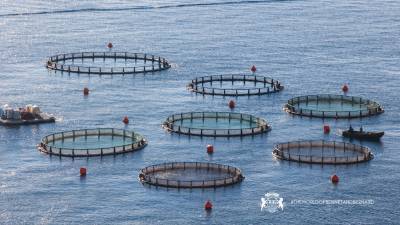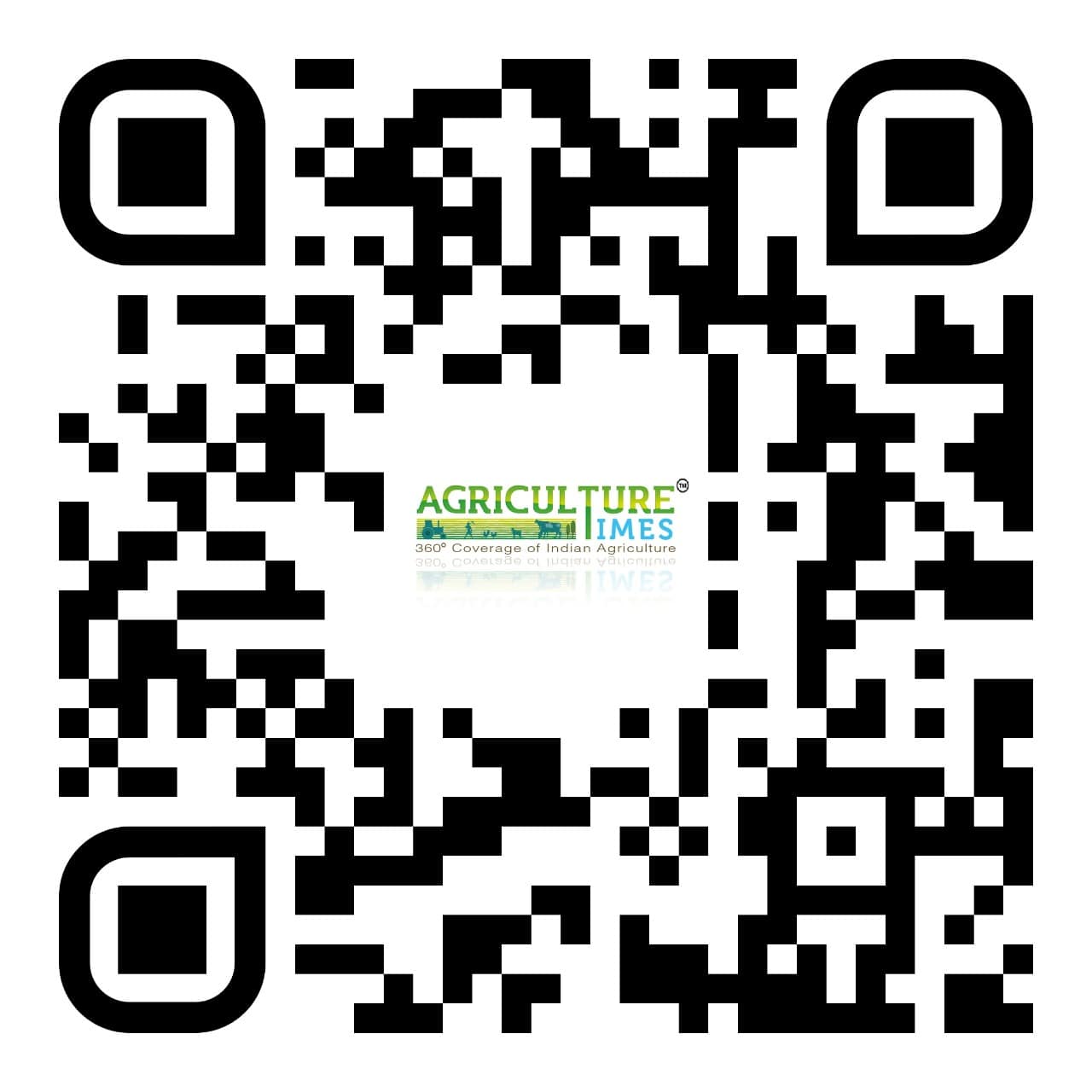NEW DELHI, 24 October 2024: As the global demand for seafood continues to rise, fish farming, or aquaculture, is becoming increasingly vital for sustainable food production.
Traditional aquaculture practices face numerous challenges, including environmental impacts, disease outbreaks, and resource limitations. However, new technologies and innovative practices are transforming the industry, promising a more sustainable and efficient future for fish farming. This article explores the latest advancements and emerging trends that are shaping the future of aquaculture.
1. Recirculating Aquaculture Systems (RAS)
Recirculating Aquaculture Systems (RAS) are revolutionizing fish farming by enabling the cultivation of fish in land-based, closed-loop systems. RAS technology addresses many of the environmental and logistical challenges associated with traditional open-water farming.
Key Benefits:
· Water Efficiency: RAS reuses water within the system, significantly reducing water consumption compared to traditional methods. This makes it a viable option in regions with limited water resources.
· Environmental Control: Farmers can precisely control water quality parameters, such as temperature, pH, and oxygen levels, creating optimal conditions for fish growth and health.
· Biosecurity: The closed nature of RAS minimizes the risk of disease transmission and environmental contamination, improving fish health and reducing the need for antibiotics and chemicals.
· Location Flexibility: RAS can be set up in urban or inland areas, reducing the dependency on coastal regions and bringing fish production closer to consumers.
Example: AquaBounty Technologies, a pioneer in RAS, uses this technology to produce genetically modified Atlantic salmon that grow faster than conventional salmon, improving production efficiency and reducing environmental impact.
2. Integrated Multi-Trophic Aquaculture (IMTA)
Integrated Multi-Trophic Aquaculture (IMTA) is an innovative approach that mimics natural ecosystems by cultivating multiple species together in a symbiotic environment. This method combines fish, shellfish, seaweed, and other organisms to create a balanced system where the waste from one species serves as nutrients for another.
Key Benefits:
· Waste Reduction: By utilizing waste products as inputs for other species, IMTA reduces nutrient pollution and enhances the sustainability of aquaculture operations.
· Biodiversity: IMTA promotes biodiversity and ecosystem health, creating a more resilient farming system.
· Economic Diversification: Farmers can diversify their products, increasing revenue streams and reducing financial risks.
Example: In Canada, Cooke Aquaculture practices IMTA by farming salmon alongside mussels and kelp. The mussels filter the water, and the kelp absorbs excess nutrients, creating a cleaner and more sustainable farming environment.
3. Precision Aquaculture
Precision aquaculture leverages advanced technologies such as sensors, automation, and data analytics to optimize fish farming practices. By collecting and analyzing real-time data, farmers can make informed decisions to enhance efficiency, productivity, and sustainability.
Key Technologies:
· IoT Devices: Internet of Things (IoT) devices, such as water quality sensors and feeding systems, monitor and control various aspects of the farming environment, ensuring optimal conditions for fish growth.
· AI and Machine Learning: Artificial intelligence and machine learning algorithms analyze data to predict disease outbreaks, optimize feeding schedules, and improve overall farm management.
· Drones and Robotics: Drones and underwater robots are used for monitoring fish health, inspecting infrastructure, and performing maintenance tasks, reducing labor costs and improving precision.
Example: Norwegian company, AKVA Group, offers a comprehensive precision aquaculture platform that integrates IoT devices, AI, and data analytics to provide farmers with actionable insights and automated control systems.
4. Genetic Improvement and Selective Breeding
Advancements in genetic improvement and selective breeding are enhancing the productivity and disease resistance of farmed fish. By identifying and promoting desirable traits, scientists can develop fish strains that grow faster, require less feed, and are more resilient to diseases and environmental stressors.
Key Techniques:
· Genomic Selection: Using genetic markers, researchers can identify and select fish with optimal traits, accelerating the breeding process and improving the quality of stock.
· Gene Editing: Technologies like CRISPR-Cas9 enable precise editing of genes to enhance specific traits, such as growth rate or disease resistance, without introducing foreign DNA.
Example: The Norwegian Institute of Marine Research is developing genetically improved strains of Atlantic salmon with increased resistance to sea lice, a common parasite that affects salmon farms worldwide.
5. Sustainable Feed Alternatives
Traditional fish feeds often rely on wild-caught fishmeal and fish oil, which can contribute to overfishing and environmental degradation. Sustainable feed alternatives are being developed to reduce the industry's reliance on these resources.
Key Alternatives:
· Insect Meal: Insects, such as black soldier fly larvae, are rich in protein and can be farmed sustainably using organic waste. Insect meal is an effective substitute for fishmeal in aquaculture diets.
· Algal Oil: Algae can be cultivated to produce omega-3 fatty acids, providing a sustainable alternative to fish oil. Algal oil is high in essential nutrients and reduces the pressure on wild fish stocks.
· Plant-Based Proteins: Ingredients like soy, peas, and other legumes are being used to create plant-based feeds that meet the nutritional needs of farmed fish.
Example: Protix, a Dutch company, produces insect-based protein ingredients for aquaculture feed, promoting a circular economy by recycling organic waste into high-quality feed.
6. Blockchain for Transparency and Traceability
Blockchain technology is being adopted to enhance transparency and traceability in the aquaculture supply chain. By providing an immutable record of transactions and data, blockchain ensures the authenticity and safety of seafood products from farm to table.
Key Benefits:
· Traceability: Blockchain enables consumers and stakeholders to trace the origin and journey of seafood products, ensuring they are sustainably and ethically sourced.
· Food Safety: By recording detailed information on production practices, blockchain helps identify and address potential food safety issues quickly and efficiently.
· Consumer Trust: Providing transparent and verifiable information builds consumer trust and confidence in seafood products.
Example: The WWF-Australia and ConsenSys partnership launched the OpenSC platform, which uses blockchain to track the journey of seafood products, ensuring sustainable and responsible practices are followed throughout the supply chain.
The future of fish farming lies in the adoption of new technologies and practices that enhance sustainability, efficiency, and productivity. Innovations such as Recirculating Aquaculture Systems (RAS), Integrated Multi-Trophic Aquaculture (IMTA), precision aquaculture, genetic improvement, sustainable feed alternatives, and blockchain technology are transforming the industry. By embracing these advancements, aquaculture can meet the growing global demand for seafood while minimizing environmental impacts and ensuring the health and welfare of farmed fish. As technology continues to evolve, the aquaculture industry is poised for a more sustainable and prosperous future.























